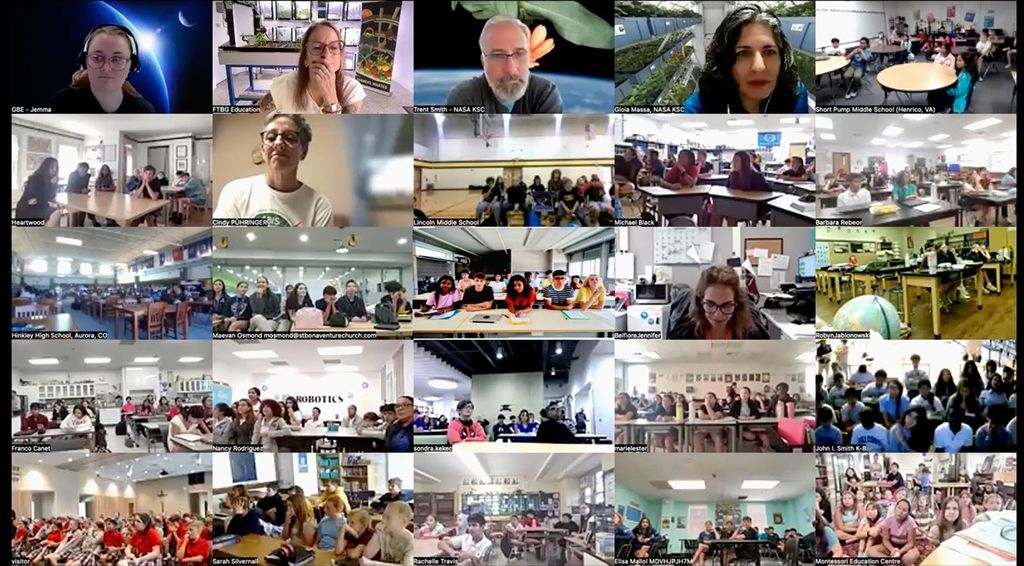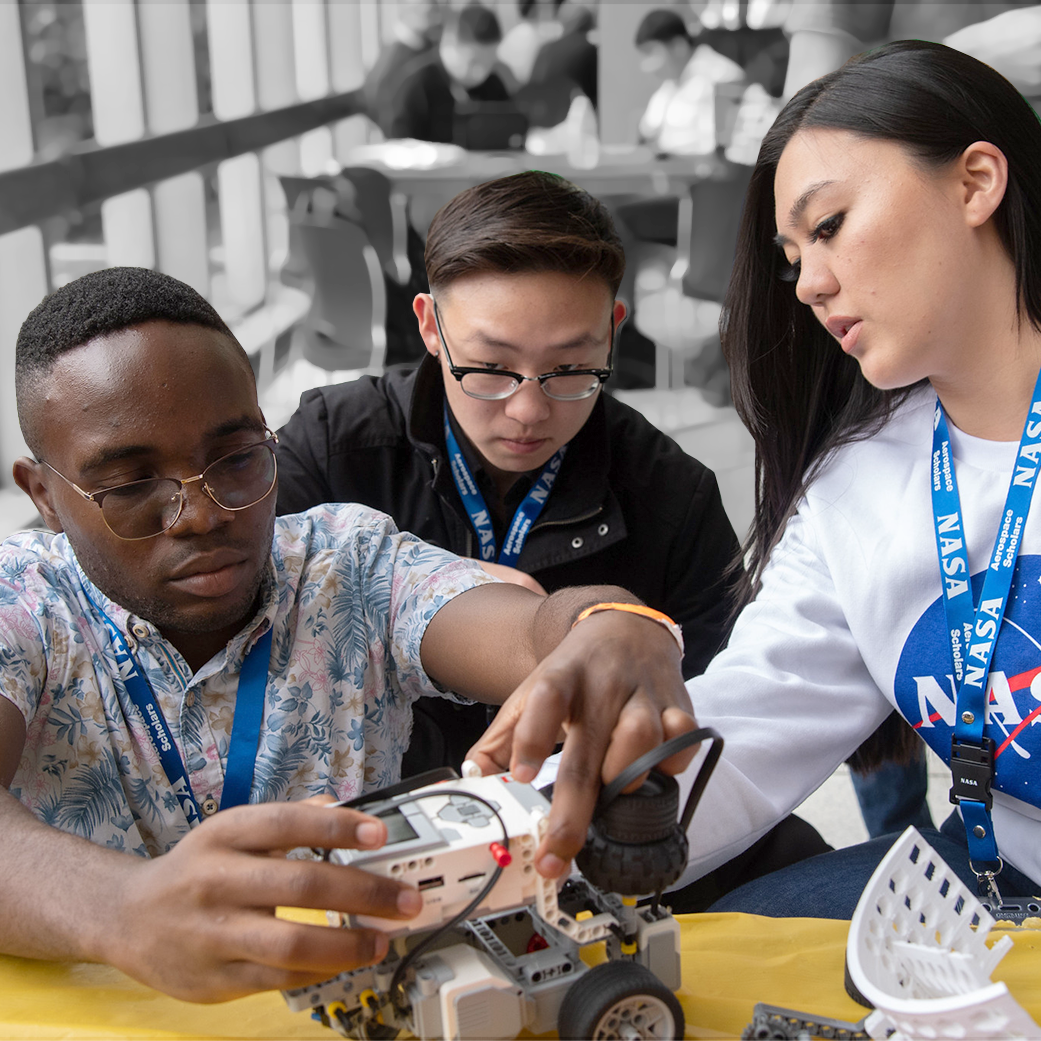As NASA sets its sights on exploring the Moon through Artemis and prepares for Artemis I, the first mission of the Space Launch System rocket and the Orion spacecraft around the Moon, the agency is partnering and collaborating with outside organizations to inspire young people and enable a range of generations to connect to space exploration.
“Collaborating with organizations outside of NASA gives us an opportunity to reach audiences in new ways,” said NASA Deputy Administrator Pam Melroy. “NASA missions and the work we’re doing to explore space are tools we can use to inspire many people around the world. Working with organizations beyond NASA helps us take that inspiration to people in their communities and help them understand how our work touches their lives.”
NASA has Space Act Agreements with organization including LEGO and Peanuts Worldwide to develop STEM engagement content and has collaborated with other organizations to inspire audiences to learn more about Artemis and NASA careers.
NASA has shared an association with Peanuts Worldwide since the Apollo Era, when Charles M. Schulz created comic strips depicting American icon Snoopy on the Moon, and the Apollo 10 crew named their lunar module Snoopy and the command module after Snoopy’s loyal owner, Charlie Brown. In 2018, NASA and Peanuts renewed the partnership, supporting Peanuts Worldwide in its development of new STEM-based curriculum and video content featuring an updated Astronaut Snoopy character and information about NASA’s deep space exploration missions. In 2021, NASA announced Snoopy would be the zero gravity indicator on Artemis I and supported additional K-5 STEM based educational activities to teach kids about gravity and the Artemis I mission.
In 2021, NASA partnered with LEGO Education to engage thousands of educators and students through Build to Launch, a 10-week digital learning series exploring the technology, STEM concepts, and careers behind the Artemis I mission. Four LEGO minfigures will fly aboard Orion, packaged along with other mementos selected by the agency to fly on Artemis I, to further connect and engage kids with the Build to Launch educational series and introduce NASA careers. The agency’s relationship with LEGO dates back to the 1990s and includes projects that engage children and adults alike to encourage interest in STEM fields and exploration.
NASA is collaborating with a host of other organizations in formal and informal ways to reach new audiences. Efforts with the Girl Scouts of America have enabled NASA to fly dozens of space science badges aboard Artemis I that will be awarded to winners of a Girl Scout-led essay contest after Orion’s return to Earth. NASA and Crayola Education are working together on future student challenges as well as digital engagement efforts. NASA is also teaming with several organizations to incorporate Artemis-themed educational content into their products, including Discovery Education, Google, Snapchat, Noggin, Tynker, American Institute of Aeronautics and Astronautics, STEM Next Opportunity Fund, Center of Science and Industry, the U.S. Forest Service and Microsoft, and Texas Instruments, among others.
To support these and future collaboration efforts to share the Artemis story and encourage STEM careers, NASA recently hosted an Artemis I STEM engagement and public engagement collaboration meeting to share ways to engage with NASA’s lunar exploration efforts.
“The Artemis mission’s goal of putting the first woman and the first person of color on the Moon represents a once-in-a-generation chance to inspire our young people to see themselves in space and in science, technology, engineering, and math learning,” said Department of Education Deputy Secretary Cindy Marten. “We’re going to need the full spectrum of skill sets to meet the needs and challenges of the future—from physicists to welders. There is room for everyone in space.”
How to get involved
There are many ways for organizations and individuals interested in joining NASA for the Artemis I mission to get involved.
NASA has opened registration for virtual guests and a special watch party opportunity for entities interested in connecting to and engaging their audiences in live remote viewing of the Artemis I launch. Museums, science centers, planetariums, schools, individual classrooms, home schools, scouts, retirement homes, community organizations, families, companies, and any other space enthusiasts are welcome to host virtual or in person watch parties. All participation, registration, and resources — including a virtual Artemis passport — are free. The Artemis I Launch and Splashdown Event Planning Guide can be used to help plan Artemis I watch parties and STEM events. The Artemis I launch and key mission activities will be available to watch on the NASA TV Public Channel and the agency’s website, as well as the NASA App, YouTube, Twitter, Facebook, LinkedIn, Twitch, Daily Motion, and THETA.TV. NASA also will provide updates on the mission from the @NASAArtemis Twitter, Facebook, and Instagram accounts and on the Artemis blog. You can also follow along with the mission with the hashtag #Artemis.
Anyone with access to the internet can submit their name to be included on a flash drive that will fly aboard Artemis I.
Sign up for the Artemis I STEM Learning Pathway to receive weekly newsletters filled with STEM resources and ready-to-use content. Each week’s resources can be used individually or in combination to create a lesson plan tied to the learning series’ weekly theme. Click here to register and select the “Artemis I STEM Learning Pathway” add-on option.
Through NASA’s Artemis Student Challenges, high school and college students can put their skills to the test in engineering and technological design challenges focusing on technologies involved in human spaceflight.
Developed for teachers, NASA’s standards-aligned educator guides for Artemis include Crew Transportation With Orion, Propulsion With the Space Launch System, Landing Humans on the Moon, Hazards to Deep Space Astronauts, Deep Space Communications, and Habitation With Gateway.
Children and families are invited to try hands-on activities, including Build Your Own SLS and Design a Crew Module, or learn to draw Artemis vehicles and ground systems.
NASA also has released two Artemis-focused graphic novels. First Woman, which tells the fictional story of Callie Rodriguez, an astronaut who becomes the first woman to explore the Moon, and You Are Going, which takes young readers on an imagined Artemis mission.
This publicly available content and other NASA imagery is widely available on the agency’s website and can be used for media, education and in some cases commercial use. Organizations wishing to use these resources should adhere to NASA’s Media Usage Guidelines and well as Merchandise and Advertising Guidelines for any commercial use. In addition to the NASA website, organizations can find a searchable database of NASA images at www.imagery.nasa.gov.
From hands-on activities for families to formal partnerships, NASA offers a wide variety of opportunities to engage and inspire the Artemis Generation in humanity’s return to the Moon. The agency’s Join Artemis website offers a comprehensive roundup of Artemis-themed activities, competitions, educator guides, and lesson plans, along with information about Artemis I virtual guest experiences and watch parties around the country.
During Artemis I, the Space Launch System, the world’s most powerful rocket, will boost the uncrewed Orion spacecraft on a weeks-long journey thousands of miles beyond the Moon. This flight is the first integrated test of the SLS rocket, Orion, and the ground systems at Kennedy Space Center in Florida. Through Artemis, NASA will land the first woman and the first person of color on the surface of the Moon, paving the way for a long-term lunar presence and serving as a steppingstone on the way to Mars.
To learn about opportunities to partner with NASA to establish a formal partnership with NASA, visit:
https://www.nasa.gov/stem/partnerships/index.html
For the latest NASA STEM events, activities, and news, visit:





























